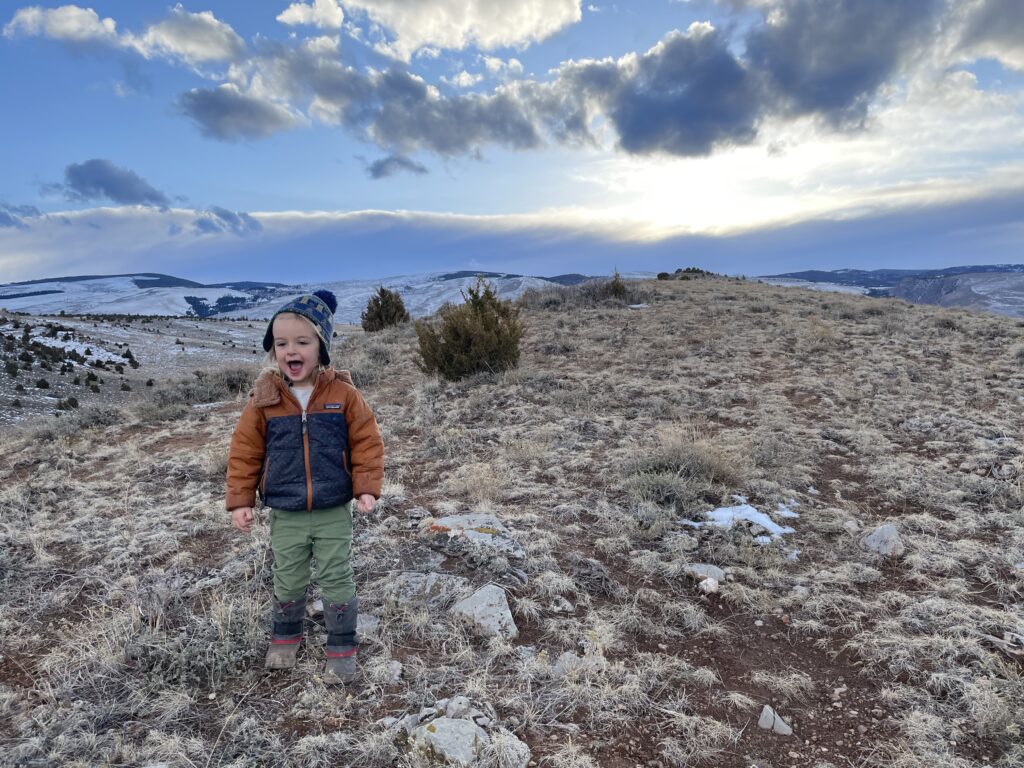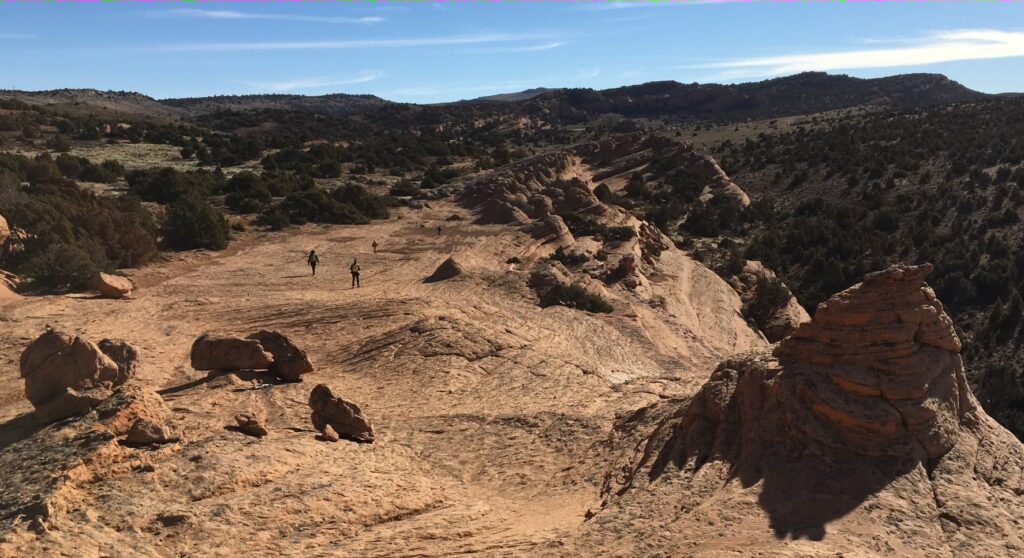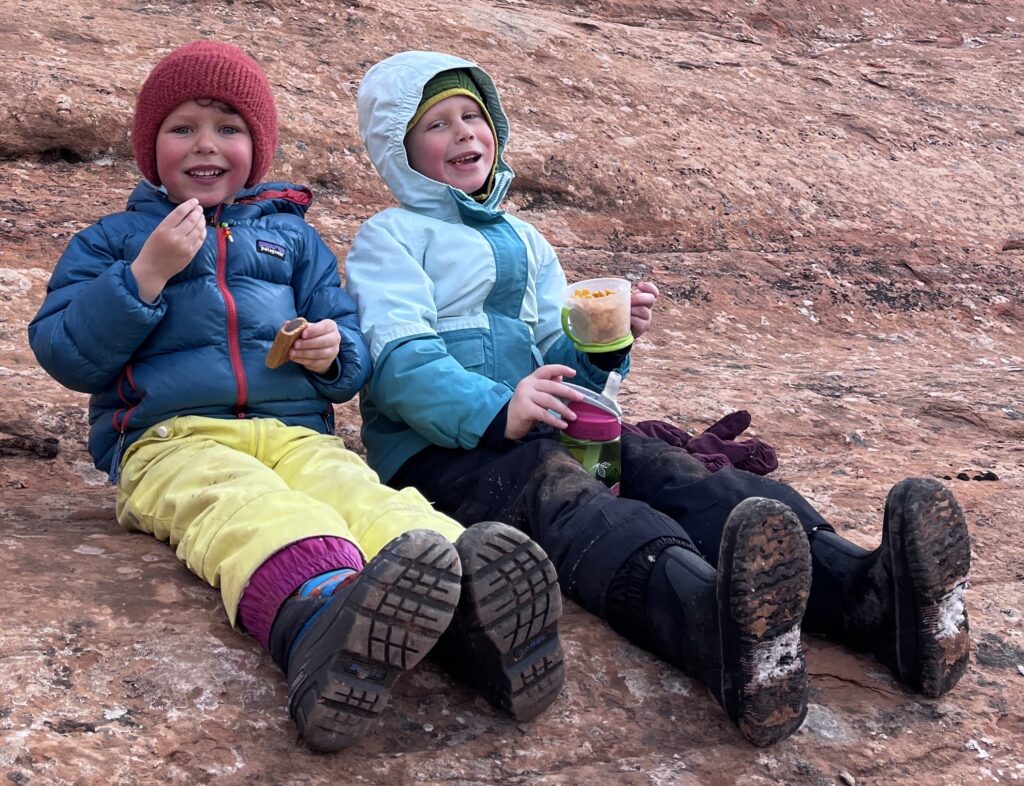April 18, 2024

Photo: Jeff Chapin
There is a hike in Wind River Country. Maybe you know it?
You park at the fishing access, figure out the latch on the gate in the livestock fence and then make your way down the ball bearing slope to the riverbank. The trick is getting across the river. Look for a makeshift bridge built by previous visitors—it will wash away in the spring floods, but will prevent boot topping for now. Or, there is a wide spot in the riffles downstream.
Once you get to the other side, there is a horse pasture to navigate. It’s a non-issue in the shoulder seasons, but when summer grasses are high, you stomp through the field tapping a long stick ahead of you to give rattlesnakes notice. There’s rumored to be a hibernaculum nearby.
You leap the irrigation ditch and carefully step over rusted barbed wire to gain the trail up the drainage. This is the part where bird song echoes off canyon walls, and you sweep aside fragrant boughs with your body as you move upslope past cryptobiotic soil and prickly pear.
Once you reach the slickrock, everything gets easier. You weave through hoodoos. The vistas are astounding. The silence, as they say, is deafening. Then you reach the gnarled, old tree our child named “the Juniper House.”
We first took Ben on this hike when he was two weeks old. I clutched him to my chest as I stepped gingerly from boulder to boulder across the river and nursed him on the far side. Once, when he was a toddler, we hauled water from the stream up to a high camp in the hoodoos. While we cooked dinner, Ben spent twilight hours under the canopy of the Juniper House, where no adult could follow, contently playing with a treasure trove of gray/green berries in the fine sand.
We returned to the hike again and again. It was a kitchen wall by which we charted Ben’s growth. Initially, he was carried and the most important things we packed were diapers and wet wipes. As Ben gained his footing and began scaling the red rock promontory under his own power, snacks became more critical than a change of clothes.

Photo: Jeff Chapin
He kept getting older. Ben learned to keep a body length away from edges and to wait at trail junctions. He proved himself trustworthy. He sought out opportunities to share the hike with friends and, with them, lead the way. The kids practiced staying together and spotting each other. They spoke of the importance of each role in the team, from route finding to sweep, and rotated through responsibilities. Each time they gained ground and looked back the way they had come—the parked car slowly becoming a speck in the distance—they marveled at their own capacity to travel so far.
When hiking with children, I am reminded that the vast heft of human history was spent doing just this. My child’s delight as he ate dirt on a shaded trail before he could even crawl felt entirely appropriate. His focus and serious intent as a toddler collecting sensory experiences—touching lichen, tasting bluebells, smelling sagebrush crushed underfoot—served the vital purpose of orienting him in the world. Recently, my husband came around a bend to see our now six year old skipping hand in hand with his friend down a gravel wash. The morning before, another parent had found Ben and a friend piled together in a dish of stone, eyes closed, soaking up the sun. At the tailend of a challenging exercise in postholing last year, Ben trailed behind me peering at the ground. When he shouted after me that he had found a fossil, I was quick to dismiss him in my impatience to reach the car, but Ben insisted I stop and look. Cradled in his palm was a phytosaur’s tooth, more than 200 million years old—an example, among many, of the wonders we experience when we let kids explore nature on their own terms.
That said, adult goals and necessities inevitably intrude. There is mileage to cover if we want to reach the Continental Divide, make it back to the trailhead before dark, watch the elk migrate or get over the pass before the storm rolls in. What felt effortless a moment before becomes effort-full. The company of kids in a remote setting transforms into a liability and we pull out all the stops to survive the day: a steady stream of snacks and water, treats at landmarks along the way, layers for warmth, delayering to cool off, playing hide and seek down the trail, guessing games, alphabet games and the sturdy backstop of scooping up kiddos and putting them on the backs of parents/horses/goats to be carried the rest of the way.

Photo: Sally Oviatt
Yet it’s worth it.
Wind River Country is an incomparable classroom and playground. Venturing into its wild spaces with kids, we are given an opportunity to figure things out together, to each play a valuable part in the unfolding adventure and feel our own agency tempered by the elements. We are offered a shared experience of natural beauty and awe. We continually find our way into and out of situations that demand our full attention. The consequences of our actions take on an immediacy here that teaches resilience, compassion, humility, foresight and discernment.
For children, it is a boundless whetting stone for them to throw themselves against, a place where they can cultivate a sense of belonging in a larger web of connection. For parents, it challenges us to be creative and meet the moment, reminding us that our children are ever changing, much like the places in Wind River Country we are drawn to explore.
Written by Anna Horn
Born and raised in San Francisco, Anna never thought she would end up happily nestled at the base of the Wind River Mountains in rural Wyoming. She spent decades teaching around the world in the fields of Wilderness Education and Wilderness Medicine. Since having a child, her pace has slowed and traditional work has taken a back seat to parenting.
Posted in Notes From the Field